|
 |
|
|
 |
 |
When Marcel Proust tastes a tea-drenched madeleine in "A la recherche du temps perdu" ("Remembrance of Things Past"), suddenly he is thrown back to his childhood, immersed in a memory of Sunday mornings, when his aunt would give him a madeleine after dipping it first in her own cup of tea. That memory was hardly cerebral; it was a total sensory experience, triggered by the coalescence of sight, smell, taste and texture. The four modern dance pieces presented by RIOULT had a similar effect on me, each in its own way. Nevertheless, I was able to remain in the here and now enough to recognize aspects of the works that contributed to their power, and a few distractions. The show began with "Iphigenia," a world premiere based on Euripides' "Iphigenia in Aulis". The story line is simple. According to the playbill, "…a thousand ships rest on the windless Greek shores waiting to …wage war against Troy. An angry Goddess has stopped the winds until the King's daughter is slain to soothe her…". This multimedia piece threw me back to my college days when I eagerly absorbed the Greek classics. But more than that, the accompanying live music composed by Michael Torke and played by Camerata New York, recalled the music appreciation course I took back then. With elements of both classical/Baroque and contemporary, the music was so compelling, it overwhelmed the dance at times, despite the efforts of Jane Sato and the other company members. Also working against a cohesive piece was the narrator (Jacqueline Chambord). I understand the artistic desire for a narrator to reinforce the theatricality of the work, but I'm not sure that convention was necessary and, in this case, the narration was both difficult to understand and overdone; "reading with expression" (i.e., "acting") versus simply and authentically telling the story. The dancers did their best to convey the storyline, though I would have liked to have experienced a more powerful connection among them. This may happen over time. The other three works were part of RIOULT's standard repertory. "Prelude to Night" was especially compelling as Penelope Gonzalez moved from what one surmised were pleasant dreams and fantasies to battling single-handedly an array of demons in nightmarish and, at times, brutalizing sequences. Although the music was by Ravel, the selections, coupled with the phantasmal dancing and staging, reminded me of one of my childhood favorites, Rimsky-Korsakov's "The Sorcerer's Apprentice" (used in the Disney production of same name). I also enjoyed "On Distant Shores," which again whisked me back to the classics of literature. Billed as "…a redemption fantasy," the piece featured Charis Haines as Helen of Troy. Haines' power and raw emotion (I was particularly struck by her facial expressions) were particularly noteworthy. In the final offering, "Bolero," the dancers move mechanistically as a group, while with each new repetition of the musical theme, one dancer countered the group with adagio-type moves. The dancer who moved against the group seemed to me to be attempting to express his or her individuality. As a whole, the work reminded me of the 1920s expressionist movement in theatre — in particular, Karel Capek's "R.U.R.". "Bolero" appropriately built to a cathartic crescendo of light, sound and movement and was a satisfying conclusion to the evening.
 Iphigenia Photo © & courtesy of Eric Bandiero |
|
 Iphigenia Photo © & courtesy of Eric Bandiero |
|
 Iphigenia Photo © & courtesy of Eric Bandiero |
|
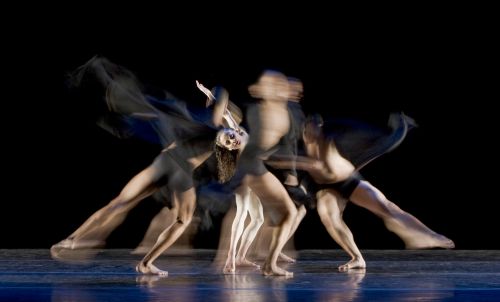 Prelude to Night Photo © & courtesy of Basil Childers |
|
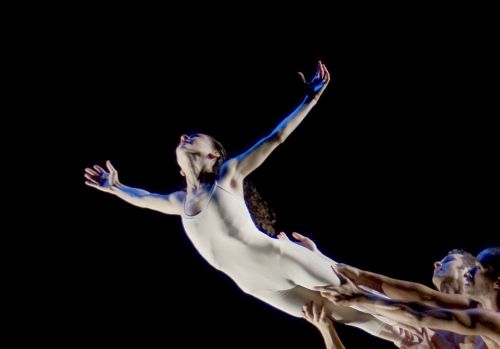 Prelude to Night Photo © & courtesy of Rioult |
|
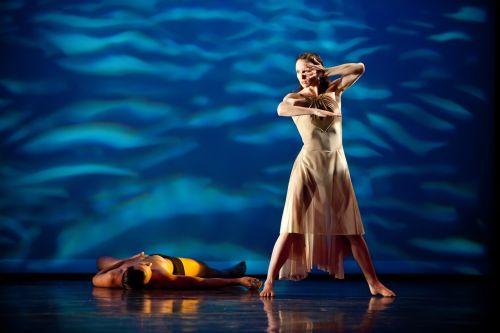 On Distant Shores Photo © & courtesy of Sofia Negron |
|
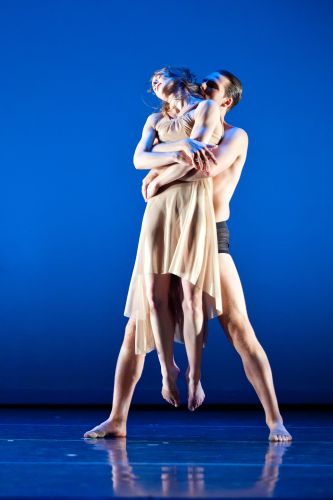 On Distant Shores Photo © & courtesy of Sofia Negron |
|
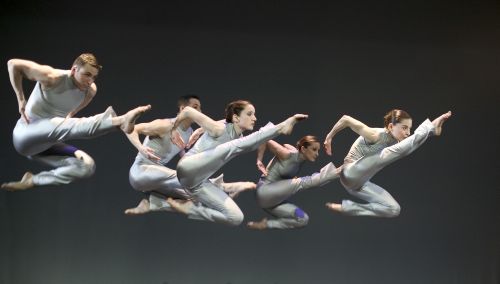 Bolero Photo © & courtesy of Basil Childers |
|
|
|









